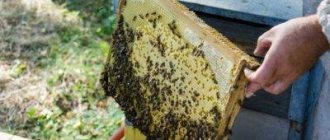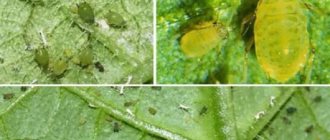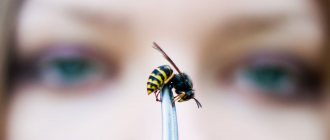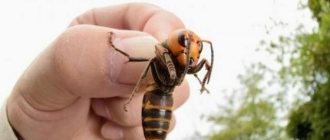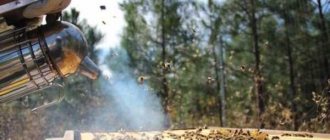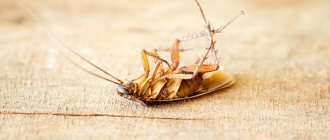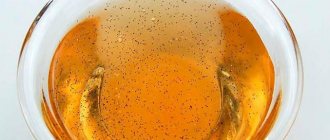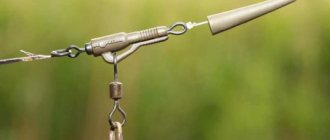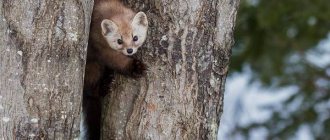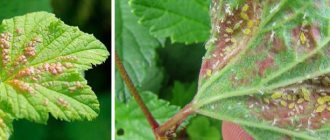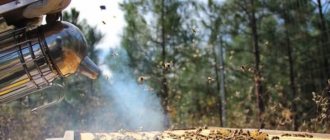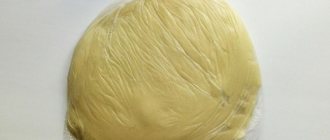In the wild, everything is clear and balanced. Before the onset of cold weather, animals and insects stock up on food to survive the cold season. This also applies to bees. But the regular collection of honey by beekeepers keeps these hard-working insects busy all spring and summer. What do they get in return to survive the winter?
For Beginners: Keeping Bees
How to make syrup for bees from sugar
The cooking technology is as follows:
- Take the required amount of granulated sugar, and it should be white. Reed and yellow are not allowed.
- Pour clean water into a prepared deep container.
- Bring the water to a boil over low heat.
- After the water has boiled, begin to introduce granulated sugar in small portions. Stirring constantly.
- The mixture is kept until the crystals dissolve.
- You can prevent burning by not bringing it to a boil.
The finished mixture is cooled to +35°C at room temperature, after which it is given to bee colonies. The water should be soft. Hard water must be left to stand for 24 hours.
How much syrup is needed for 1 bee colony?
As practice shows, the volume of sugar syrup obtained when feeding bees should not exceed 1 kg at the beginning of the winter period for each bee colony. By the end of winter, the consumption of finished products will increase, and each hive will consume up to 1.3-1.5 kg monthly. In the spring, when young offspring are born, the amount of products consumed can double. This is due to the fact that there is still very little pollen and the weather does not allow starting to collect nectar.
How do bees process sugar syrup?
Processing is carried out by young insects that will go into winter. Syrup, like nectar, is not a complete food. As you know, syrup has a neutral reaction, and after processing it becomes sour, and is practically no different from nectar. Bees add a special enzyme, invertase, which breaks down sucrose.
What additives are needed in the syrup for egg production of the uterus?
To increase egg production, the hive queens add pollen substitutes to the combs - protein feed. In addition, you can give:
- milk, in the ratio of 0.5 liters of product per 1.5 kg of sugar syrup. This product is given at 300-400 g per hive, gradually increasing the dosage to 500 g;
- To stimulate the growth of bee colonies, cobalt is used - 24 mg of the drug per 1 liter of ready-made feeding.
In addition, high-quality regular syrup will help increase the number of broods.
Shelf life of syrup for feeding bees
If necessary, if a large amount of subcortex has been prepared, it can be stored for a maximum period of 10 to 12 days. To do this, use glass containers that close tightly. For storage, choose a room with a good ventilation system and low temperature conditions.
Despite this, many beekeepers strongly recommend using exclusively freshly prepared fertilizers.
In addition, it is important to consider that most bees will not take syrup if it is not prepared correctly.
Dried honey
If there is a shortage of food for bees, you need to provide them with a spare one, namely heated frames with sealed and good honey. If there are no honeycomb packages with sealed products, you can use the centrifugal option. The process of preparing such food for bees is as follows: the ingredient is placed in an enamel or aluminum pan, adding water in the proportion of a glass of water per kilogram of product. The container is placed in a cauldron with water and brought to a boil, stirring occasionally with a wooden spatula. It is necessary to achieve complete dissolution of all crystals. Then you should remove it from the stove and pour it into feeders.
Feeding insects with dried honey helps prepare for the first honey harvest
Before feeding them this honey, it is important to warm it thoroughly so that there are no crystals. After dissolution, it is left overnight in a warm room and distributed to insects warm. If it is not possible to feed the bees with dried honey, you can use sugar supplements
However, you should not overuse them, as processed sugar syrup can penetrate into honey products. It is also necessary to remember that the use of various fertilizers in the spring is carried out in extreme cases
If it is not possible to feed the bees with dried honey, you can use sugar supplements. However, you should not overuse them, as processed sugar syrup can penetrate into honey products. It is also necessary to remember that the use of various fertilizers in the spring is carried out in extreme cases.
Sugar syrup or honey syrup is poured into empty cells located in the outermost frames. If desired, a ceiling feeder can be used. Do not feed in large quantities. One liter is enough to keep you full for two to three days. The bees need to be fed until their honey reserves are replenished. Feeding in spring and autumn can be carried out using three different methods, namely: using cans, feeders, and honeycombs. Before using the feeder, it must be thoroughly washed and dried. Then you can pour molten wax, previously mixed with rosin or stove ash, into the cracks.
What to feed?
Unlike spring sugar syrup, autumn one should have a higher concentration. As a rule, it is made in two types:
- for one liter of water - two kilograms of sugar;
- one to one.
Beekeepers often use inverted sugar for feeding, especially in autumn. Such sugar is used in the preparation of artificial honey, and is more easily absorbed by the bee. Inverted sugar syrup for bees can be prepared at home using acetic or citric acids. In this case, acids are used to hydrolyze sucrose and the bee did not waste its energy on this process, but left it for wintering.
Among Russian beekeepers, the most common recipe is I. A. Melnichuk. The syrup is prepared according to the following recipe:
- honey - 7.5%;
- sugar - 74%;
- water - 18.5%;
- concentrated acetic acid - 0.03%.
Having combined and dissolved all the components, the syrup must be kept at a temperature of 35-36 ᵒC for a week.
There are other recipes for preparing fertilizer. Its proportion is as follows:
- sugar - 3 kg;
- water - 2 l;
Water is usually boiled and then sugar is added. Chop thoroughly and cool. Next, add 70% vinegar essence 1 ml, or 0.3 ml per kilogram of sugar. This fertilizer is ready for use when warm.
Since honey is a rather complex product and sugar syrup cannot replace it, to make it easier for bees to digest it, scientists are developing supplements that contain enzymes that help decompose sucrose.
The Beekeeping Research Institute has long patented an enriched fertilizer, which is highly appreciated by beekeepers.
For many decades, there has been a debate among beekeepers about feeding bees with invert feeding or simple sugar syrup. And those who conducted experiments in their apiary proved that when bees received feeding from inverted sugar they had the following indicators:
- Inverted feed does not crystallize in either open or printed combs;
- The bee completely processes the syrup and prints the honeycomb;
- Wintering is going better:
- The exit from the winter quarters is more friendly, widespread, and quick;
- Spring bee excrement was thick and thread-like;
- The queens carried out stable and progressive oviposition.
To prepare syrup for autumn feeding of bees, the recipe is not complicated, but it must be given to the bees warm, at a temperature of 25-27 ᵒC. You can check the temperature with a simple touch. The bee does not take cold feeding very well; in the end, even if it is calculated correctly, the syrup will be superfluous.
Inverted syrup with citric acid
The debate about which acid to use to acidify sugar syrup also continues. Opponents of vinegar essence claim that it is better to use citric acid for inversion, since it is the one that participates in the biochemical processes occurring in the bee’s body and cannot cause harm.
The recipe for this sugar syrup is as follows:
- Sugar - 1 kg;
- Citric acid - 2 g;
- Water - 1 l;
The cooking technology is as follows:
- sugar dissolves in water;
- The dishes are placed on heat and brought to a boil;
- crystalline citric acid is added;
- heating continues for one hour at the lowest temperature.
Normally, in order to prepare the solution correctly, it is better to heat it in a boiling water bath for 2-2.5 hours. In this case, the process will proceed slowly, but at a stable temperature not exceeding 70 ᵒC, and the results will be the most optimal.
Inverted feeding with lactic acid
Lactic acid is also organic and it seems more expedient to use it for sugar inversion.
To prepare this syrup you need to take:
- water - 3 l;
- sugar -5.5 kg;
- lactic acid - 10 g.
All components are combined and boiled in a water bath for 30-40 minutes after the water boils.
Some beekeepers use natural inversion. To do this, take 8 kg of honey and 70 kg of sugar per 20 liters of water. Having prepared the syrup, it must be kept at a temperature of about 35 ᵒC for 6-7 days. If the weather is very hot, then use the sun and wrap up well at night. Light heating is acceptable.
You can prepare honey sati. To do this, boil water, cool it to 50 ᵒC and add one kilogram of honey to one liter of water.
If necessary, stimulants and medicinal substances are added to the syrup.
Prepared fertilizers must be fresh. To ensure that the preparation of autumn feeding of bees is not unnecessary, the calculation is carried out on the family. So for one family you need 150-200 ml. Some beekeepers do not calculate the dose too much, and the remaining syrup is stored in the refrigerator.
Science does not stand still
Production has adopted scientific developments and responded to the needs of beekeepers.
Scientists have learned to use yeast and microscopic fungi to produce purified, concentrated immobilized or free invertase, which cannot be prepared at home.
In the modern world, there is no need to prepare inverted syrups yourself; it is enough to use ready-made supplements, which can be purchased in specialized stores.
How to feed bees in late autumn
The following factors are of decisive importance for the quality wintering of families when feeding sugar in the fall: the amount of sugar fed, the concentration of sugar syrup and the time of feeding. The first two factors have been studied in sufficient detail (A.G. Martynov, 1978; M.V. Zherebkin, 1979; G.F. Taranov, 1986; V.I. Lebedev, A.I. Toroptsev, 1996). It has been proven that feeding bees with sugar syrup late in the fall leads to physiological wear and tear on the body of insects, reducing their life expectancy and deteriorating wintering results (M.V. Zherebkin, Ya.L. Shagun, 1971). Regarding the third factor, the influence of the timing of feeding sugar syrup, there are no experimental data in the literature.
To solve this problem, we conducted experiments for two years. Four groups of five analog families each were formed annually. They were fed 65% sugar syrup at different times: August 18 and 30, September 5 and 20. Sugar honey prepared by bees was evaluated according to GOST 19792-87 indicators.
It is known that the maturation of food in the hive is influenced by many factors: the concentration of the sucrose solution and its dose, the period and calendar terms of processing, the strength of the family and the physiological state of the bees, the temperature level inside the hive and the external environment.
In autumn, the intensity of removing excess moisture from sugar syrup and giving it an acidic reaction is almost the same as when processing nectar during honey collection. Already three days after transferring to the cells, the syrup in terms of active acidity and water content does not differ significantly from the requirements of GOST. Consequently, bees remove most of their water in the first three days. Over the next six, the water content decreases by an average of only 4% and subsequently remains virtually unchanged. The active acidity of the feed three days after its preparation by bees is 3.7, subsequently this indicator changes only by 0.1.
Significant differences were noted in the speed and duration of sucrose inversion by bees. Three days after feeding the syrup, the food prepared by the bees contained an average of about 23% sucrose. Over the next six days, the mass fraction of reducing sugars increased by only 7.6% (P 0.99) and significantly less sucrose (P>0.99) than in food made from the same sugar syrup, but prepared from early to mid-September ( Table 3). The content of sucrose in the feed differed by an average of 2.7 times (8.1 and 21.9%, respectively).
Analysis of sugar food prepared by bees at different times and selected at the beginning of wintering showed that in this case, significant differences remain in the amount of reducing sugars (P>0.99) and sucrose (P>0.99). The food prepared by bees in September contains 2.5 times more sucrose than that prepared in August (7.9 and 19.4%, respectively). Only sugar food prepared by bees in August met the requirements of GOST according to the main indicators studied. It should also be noted that the later in the fall sugar syrup was fed, the smaller the area of the honeycomb with food the bees sealed with wax caps.
Analysis of sugar food prepared by bees at different times and selected at the end of April showed that the ratio and amount of reducing sugars and sucrose remained at the level of the beginning of wintering. Consequently, in winter, sucrose inversion in the cells practically stops due to the low temperature in the nest. It probably occurs only at temperatures above 25 C.
There were no differences in the mass fraction of water and active acidity of winter food prepared by bees at different times.
A fairly clear pattern of the intensity of crystallization of winter food has been revealed depending on the mass fraction of sucrose, the period of feeding sugar syrup, and the presence or absence of wax caps. The later sugar syrup was fed in the fall (from August 18 to September 20), the more sucrose was contained in the winter food (6.8 times - 3.9 and 26.4%, respectively), the more cells remained with unsealed wax caps, and the more the crystallization of feed was greater (4.7 times) in spring.
Thus, the timing of feeding sugar syrup in the fall reliably affects the level of sucrose inversion, its amount in winter food, the beginning and intensity of sealing of cells with food with wax caps and its crystallization, and therefore the results of wintering of bee colonies. In Central Russia, to ensure successful wintering of bees, part of the natural honey must be replaced with sugar feed no later than the end of August.
V.I.LEBEDEV, V.P.LEBEDEVA, M.P.SOLOVOVA
Beekeeping Research Institute, Rybnoye, Ryazan region.
Source
Description and methods of preparation
In order to properly cook the fertilizer, it is recommended to use extra-class white granulated sugar. The water must be filtered; well water will do. Each beekeeper prepares syrup according to his own recipe, but the optimal solution is a solution of 62–64% concentration.
You cannot dilute the syrup with boiling water; it is recommended to use water brought to a boil. Before feeding, the sugar solution must be slightly warmed to 35–40 degrees Celsius.
Ingredient consumption is presented in the table:
| Syrup concentration | Quantity of sugar | Quantity of water | Auxiliary components |
| 60% | 1.5 kg | 1 liter | At the discretion of the beekeeper |
| 70% | 2 kg | 1 liter | At the discretion of the beekeeper |
It is recommended to give sugar syrup to bees in two ways. The syrup is poured into special feeders, which are installed at the top of the hive. Feeders are commercially available, but beekeepers can make them themselves. The second method is to pour the syrup into tight bags. Syrup bags are placed on top of the canvas. It is recommended to pierce the bags in several places.
Inverted syrup is much better absorbed by the digestive system of insects. Inverted feeding is prepared in several ways: with the addition of honey and replacing it with nutritional supplements. The inverted solution has a number of advantages:
- less energy is spent on the absorption of syrup;
- after inverted feeding, the “survivability” of bees in the spring increases significantly;
- strengthens weakened families;
- the syrup is not subject to crystallization.
A solution without honey is prepared using 6 kg of sugar and 7 liters of water with the addition of citric acid. All ingredients are thoroughly mixed and brought to a boil. The finished syrup should cool and brew for 3-4 hours. Honey-based feeding: it is recommended to add 10% honey from the total mass of the solution to 70% sugar syrup. The fertilizer is thoroughly mixed and stored in a dark place for 7 days. Syrup with the addition of Pchelit: mix water and sugar in equal parts, add the drug according to the instructions for use. The breakdown of sugar lasts 48 hours, the temperature should not exceed 45 degrees Celsius.
Honey satiety is the most expensive, but also the most useful of all supplements. In other words, fullness is honey diluted with water. Thanks to honey nourishment, the number of bees in the family increases, and resistance to disease increases significantly. The concentration of the solution directly depends on the purpose of feeding. At the end of summer - beginning of autumn, it is recommended to use a thick concentrate. It is prepared at a ratio of 3:1 (three parts honey to one part water). It is recommended to melt thick honey in a water bath; boiled and cooled water is slowly poured into melted honey. To mix, the components must be heated to 40 degrees. Cast iron cookware should not be used for making syrups. Enameled, plastic or aluminum containers are suitable.
Feeding container
As already stated, the feeding container can be any container. But there are specialized feeders that are not without their pros and cons:
- A vertical feeder is a fairly large container that will reduce the beekeeper’s time spent on feeding. Minus: the feeder is not installed on the nest, and therefore it cools down quickly and the bees stop taking honey from it.
- Horizontal feeder - great for storing the sweet solution at the desired temperature, as it is installed directly on the nest. Disadvantage: small volume, bees often drown in molasses.
Many experienced beekeepers have found another 3 option for feeders - syrup in bags. You need to take bags that are not particularly strong so that the bee can bite through them. The sugar liquid is poured into the bag and placed on the nest under the canvas. The top is covered with a pillow.
Even a novice beekeeper can handle all this, but sometimes feeding in the fall becomes a real challenge when the hive begins to hurt.
Composition of syrup for feeding bees for the winter
Beekeepers have tried many different feeding recipes. Now we use proven and high-quality compositions:
- The most optimal ratio is 3 (sugar): 2 (water). This results in 60% sugar content in the syrup. For example, to prepare 10 liters of ready-made food, you need to take 6 kg of sugar and 4 liters of water. To prevent crystallization from occurring, acetic acid is added to the mixture in a proportion of 0.3 ml per 1 kg of sugar. This ingredient has a good effect on the quality of wintering for bees. They have a more developed fat body, and in the spring they produce excellent brood.
- You can increase the immunity of insects by adding cobalt to the feed. This component has a beneficial effect on young animals. Bees increase their resistance to disease and head out in good health in the spring. You can purchase this component at the pharmacy. There the substance is sold in the form of cobalt chloride tablets. It is enough to add these 2 tablets to 2 liters of prepared syrup.
- Processed syrup honey does not have enough nutrients for bees. To bring the composition as close to natural as possible, cow's milk is added to the sugar solution. Thus, bees can use 76% of the required nutrients. To prepare this syrup you need to take 20% less water. After the finished syrup has cooled to 45 0, you need to add milk in the amount of water that is missing to the proportion. So, to prepare 10 liters of syrup you need to use 3.2 liters of water and 0.8 liters of milk. This solution is supplied to the hive in a warm state.
- Baker's yeast is often used in cooking recipes. In this case, the syrup is boiled in a 1:1 ratio. For 10 liters you need to take 250 g of compressed yeast. They need to be ground into half a liter of the finished syrup and then added to the entire solution, mixing well. This feeding of bees with sugar syrup for the winter will provide the insects with a sufficient amount of microelements and vitamins. When using dry yeast, you should soak it in advance at the rate of 12 g per 1 liter of finished syrup.
- To avoid nosematosis, you need to add Fumagillin to the syrup at the rate of 250 ml per 12.5 liters of finished food. The medicine must be diluted in clean water before use.
- To protect hives from mites, you need to add a small amount of pine needles to the fertilizing. Also, such an additive will provide families with additional vitamins and give the solution a pleasant smell.
- You can supplement the protein in the bees' diet with a chicken egg. To do this, beat the egg well with a whisk or mixer and strain it through cheesecloth. The ingredient must be added to the finished syrup. For 1 family of bees, 1 piece will be enough.
All additional ingredients are added to the cooled syrup. Ready-made food should not be boiled or overheated. If you need to boil the finished syrup, you need to periodically remove it from the heat before it boils.
Preparation
As mentioned earlier, the correct ratio of microelements in the honey feed is very important for the life of bees. We have selected some great recipes for you and want to share them!
To prepare this type of additional food, both liquid honey and a candied bee product are suitable.
To prepare this type of additional food, both liquid honey and a candied bee product are suitable.
From liquid honey
| Name | Quantity |
| Linden honey (or any other) | 100–150 g |
| Clean, drinking water | About 200 ml. |
| Pan (preferably cast iron) | 1 PC. |
- Pour water into a saucepan and bring to a boil. Then cool to 40°C and add the beekeeping product. Stir until completely dissolved.
- Cool the resulting solution to room temperature so as not to harm insects. Feeding insects is carried out with a warm solution.
From candied honey
| Name | Quantity |
| Linden honey (or any other) | 80–120 g |
| Clean, drinking water | 200 ml. |
| Pot | 1 PC. |
Candied honey is melted in a water bath; it is important not to overheat the beekeeping product. Water is poured into a pan and brought to a boil, cooled to 40°C, then mixed with melted nectar
The resulting liquid is cooled to room temperature. The honey is ready for use.
How to feed bees in the fall with sugar syrup
The main task of feeding is to ensure that the family survives the winter with sufficient food. Feeding bees with honey in the fall is impractical, so they provide a sugar product. The quantity is calculated taking into account:
- In what climate zone is the apiary located? In cold, long winter conditions, food is needed in greater quantities than in the southern regions.
- If the hives are located on the street, the insects will spend more energy on heating; accordingly, the food supply should be sufficient; an apiary located for the winter in the wild area will spend less product.
- A colony formed with 8 frames uses more honey than one overwintering with 5 frames.
Frames installed for the winter must contain more than 2 kg of sealed bee product. On average, one family accounts for up to 15 kg of honey. In the fall, the sugar solution is given 2 times more than the missing norm. Some of it will be used to feed insects during processing; the rest will be sealed in honeycombs.
Timing of autumn feeding of bees with sugar syrup
Feeding begins after completion of honey collection and pumping out bee products. Artificial nectar is given in August, work is completed no later than September 10. The timing is dictated by the life cycle of insects. Bees processing raw materials spend a lot of energy, which they will not have time to restore before winter. Most of the individuals will die.
If raw materials are supplied to the hive throughout September, young bees that have recently emerged from the brood will join in its processing; they will weaken by winter; in the spring, dead bees will be added to the hive. The queen will perceive the supply of nectar as a full-fledged bribe and will not stop laying eggs. The young will come out too late, in cold weather the young animals will not have time to fly around, and the feces will remain on the honeycombs. The swarm will not take honey from this framework; the family is doomed to death, if not from hunger, then from nosematosis.
Important! If the timing of feeding is observed, the worker bees will fully recover before the winter hut, the queen will stop laying, and the last young individuals will have time to fly around
Ways to feed bees in the fall with sugar syrup
In beekeeping, a feeder is a mandatory attribute for completing a hive. Feeding devices come in different types and with all sorts of installation options. Feeder options:
- The hive is installed on a board near the entrance of the bees to the hive; it consists of a small wooden box divided into two sections, in one of them a container with food is placed.
- The Miller feeder is installed on top of the hive and has a passage for bees.
- A frame device in the form of a small wooden box, wider than the frame, the edge protrudes from the hive, it is placed near the nest.
- An open feeding method, when liquid is poured into a small container and placed near the entrance to the hive.
- The bottom feeder is installed closer to the back wall inside the hive; food is supplied from the container through a hose; the bottom of the device is equipped with a float so that insects cannot stick.
The traditional method of container feeding is often used. Glass jars are used and the liquid is held in a vacuum. The device is installed above the bees, the food comes out of pre-made small holes.
Autumn feeding of bees with sugar syrup in bags
Autumn sugar feeding for bees can be carried out in durable plastic bags so that the material does not tear:
- The prepared food is poured into a bag, the air is released, and tied 4 cm above the liquid.
- An improvised feeder is placed on top of the frames.
- There is no need to make cuts to exit the feed. Insects will gnaw through thin material themselves.
- A single dose is calculated in accordance with the number of bees in the family. A swarm of 8 frames processes about 4.5 liters of raw materials into honey per night.
Stimulation of egg laying
In order to obtain maximum returns in the fall, all families should be as powerful as possible before the honey harvest. Therefore, future success will depend on how the bee family begins to develop starting from February-March. When the brood is laid later, the bee colony will have little time to raise a sufficiently large number of worker bees. The beekeeper's task is to create the most pleasant conditions for the development of the bee family, which primarily depends on how actively the queen lays eggs. Therefore, stimulating feeding of bees is used in February and early spring.
Experienced beekeepers know that the better the queen works, the more intensely the bees supply nectar and pollen. With the end of wintering, the supply of these products to the hive is limited, so beekeepers imitate natural supply. Cherrying is stimulated by liquid feeding in the form of sugar syrup or honey. Although most often this type of feeding should begin with the establishment of stable warm weather.
If it is very cold, this feeding technique cannot be used.
The fact is that such feeding of bees in February will become an incentive signal, as a result of which they can fly out of the hive for a bribe. Therefore, mass death of insects is possible.
If you use this fertilizer correctly, you can simultaneously stimulate the queen to increase egg production and encourage worker bees to continue active work.
Feeding for the treatment and prevention of diseases
An effective way to improve the health of a bee colony in the fall is to add plant ingredients to the bee diet. An inexpensive and effective remedy, in particular, is wormwood. It is very useful for maintaining the health of bees during the cold season.
Wormwood leaves are soaked in ethyl alcohol and left in the dark and cool for 72 hours. This tincture is then mixed into regular sugar syrup (4 tablespoons per 2 liters of syrup). Wormwood is an excellent antiseptic; it contains many substances, vitamins and microelements that are beneficial for bees. But try not to exceed its concentration - the bitter taste can scare away bees.
Features of using pine infusion
Another very useful and effective option is the so-called pine infusion. It requires pine needles. They need to be finely chopped with scissors, washed thoroughly and filled with water in a ratio of 1 to 4.5. After this, you need to boil the resulting mixture for about an hour and a half. The infusion will be slightly bitter. It needs to be strained and, while it is warm, add five shares of sugar syrup to one share of this infusion. Feeding is carried out first every other day, then for a week and a half it is recommended to give the bees a similar infusion every day. As a result, bee colonies will develop especially actively and their health will become noticeably better from drinking the infusion.
Proportions for preparing sugar syrup for bees
Sugar in kilograms, water in liters.
| Syrup in liters | Syrup preparation proportions | |||||||
| 2 x 1 (70%) | 1.5 x 1 (60%) | 1 x 1 (50%) | 1 x 1.5 (40%) | |||||
| kg | l | kg | l | kg | l | kg | l | |
| 1 | 0.9 | 0.5 | 0.8 | 0.6 | 0.6 | 0.6 | 0.5 | 0.7 |
| 2 | 1.8 | 0.9 | 1.6 | 1.1 | 1.3 | 1.3 | 0.9 | 1.4 |
| 3 | 2.8 | 1.4 | 2.4 | 1.6 | 1.9 | 1.9 | 1.4 | 2.1 |
| 4 | 3.7 | 1.8 | 3.2 | 2.1 | 2.5 | 2.5 | 1.9 | 2.8 |
| 5 | 4.6 | 2.3 | 4.0 | 2.7 | 3.1 | 3.1 | 2.3 | 3.5 |
It is known that 1 kg of sugar dissolved in 1 liter of water will give 1.6 liters of 1x1 syrup.
Hence, if you dissolve 5 kg of sugar in 5 liters of water, then you will get a solution of 8 liters.
From the table it is not difficult to calculate that to prepare sugar syrup for bees in an amount of 10 liters, a concentration of 50% or a proportion of 1x1, you need to add 6.2 kg of sugar to the same amount of water.
As you know, 1 kg of water corresponds to a volume of 1 liter.
Another example. To obtain a syrup of proportion 1x1.5 in the amount of one liter, you need 0.688 liters of water, to which add 0.458 kg of sugar. In the table, these numbers are rounded, resulting in 0.5 x 0.7.
Thus, when making sugar syrup for bees, do not worry too much about the quantity. Although you need to know approximately how it is made, so as not to take a double dose.
The main thing is to maintain the necessary proportions. The excess syrup can be distributed again to your wards.
Preparation of invertase
The inversion process is carried out in several ways.
- Classic invert food is prepared from sugar, water in the expected proportion with the addition of food acids (acetic, citric, tartaric). Lon is not entirely beneficial for bees, as it contains a large portion of carbohydrates.
- Natural invertase is a beekeeping product and is produced by the bees themselves. This is a high-quality food containing nutritious and fortified components, which families use for their own nutrition.
- Industrial invertase. Produced by enterprises based on fungi and yeast. Experienced beekeepers rarely use it, since the product does not contain honey. Such feeding is necessary in order to increase immunity and future productivity, which has been reduced over the winter.
Sugar syrup
To prepare this fertilizer you will need 6 liters. ready-made food, to which citric acid was previously added in the amount of 14 g. The process is slightly different from regular cooking.
- Bring 6 liters of water to a boil.
- Reduce the fire to the minimum possible. Add 7 kg. sugar, stirring constantly. Make sure that the sugar does not burn.
- Add the full amount of citric acid and simmer with constant stirring for at least an hour.
During the process of simmering over low heat, the sugar in the feed is inverted into glucose and fructose. After the temperature of the syrup is no more than 39 degrees, you can introduce food into the feeders and honeycombs.
Sugar-honey mixture
This mixture does not require cooking, but it is better to prepare it strictly following the proportions:
- water – 2 liters;
- 7.2 kilograms of sugar;
- 750 grams of natural honey;
- 2.4 gr. citric or dry acetic acid.
Prepare in one container, where all the ingredients are placed and filled with warm water (35-40 degrees). Mix everything thoroughly. After this, the solution is kept warm (up to 35 degrees) for 5 days. The syrup must be mixed twice a day - morning and evening. After five days you can fill the feeders.
Based on industrial invertase
Industrial invertase is purchased in beekeeping stores. For example, this could be the drug “Pchelovit”. Making the syrup is quite simple, you will need:
- 5 liters of water;
- 5 kilograms of sugar;
- 2 gr. industrial invertase.
Prepare the syrup in the usual way, dilute sugar with boiling water. After the temperature drops to 40 degrees, add the required amount of industrial invertase and mix thoroughly. The prepared solution is kept at room temperature for two days, stirring constantly. This time is enough for fermentation. But it is better if it is transferred to cold conditions to prevent fermentation. This feeding will come in handy in March or in winter.
Autumn feeding
Feeding bees in the fall is an important activity in beekeeping that should not be neglected. In the summer, bees fly around because they need to put aside a certain amount of honey for the winter in order to feed the whole colony.
However, in conditions of artificial keeping and breeding of bees, the main part of honey production is confiscated by beekeepers. As a result, bee colonies have little time to prepare food for the winter. There are situations when food supplies are affected by honeydew. Such food will be unsuitable for bee colonies. Otherwise, most of the apiary families will die.
To fully care for bees, you will need a set of measures in the autumn before winter. As a top dressing you can use:
- sugar syrup;
- honey;
- honey full;
- medicinal feeding;
- protein or stimulating food.
It is important to feed the bees correctly, observing the required proportions and dosages, so that they are prepared for wintering, and this period proceeds without numerous deaths and diseases. Taking into account average calculations, one beehive consumes up to 8 kg of sugar in winter
The product must be of high quality, otherwise the bees will not be able to digest it. In such a situation, by spring the bees will be weakened and unprepared for the spring period.
How much feed is required?
The food must be prepared for the period when the bees make their last flight. Most often this happens around September 20th. This means that before this day it is necessary to complete a set of preparatory work for winter - including feeding.
- We start preparing food at the beginning of August. Approximately on the 5th-9th, a routine inspection of the bee colony is carried out to identify fodder honey. This is about 12 kg. By the way, the frames occupied by brood and containing honey only at the top bars will need to be removed after the brood emerges. Low-copper frames are also removed along with them. Thus, it turns out to be about 20 kg per family.
- It’s not a problem if 20 kg of honey is not available: for some families 16-18 is enough. There is a way to calculate the amount of honey. Each frame contains 2-2.5 kg of honey. We multiply the number of kg by the number of frames occupied by the family, we get the required weight of honey. Each queen needs more food because of her gluttony: we add 3 kg for each queen. Some use calculations based on the total weight of the bees. So for every kilogram of bees there is 5-6 kilograms of honey.
- There should be enough food for the bees not only for the winter, but also for part of the spring: for the period before the main harvest.
- The prepared food must be of high quality, not honeydew or crystallized. Therefore, it needs to be harvested during the period of large honey harvest - and immediately sealed.
Why feed in the spring?
Spring is an active period for bees, when it is necessary to build up strength for the upcoming honey harvest, which is usually held in July.
Spring feeding of insects is carried out for the following purposes:
- replenish food supplies;
- stimulate egg laying by the uterus;
- cure some diseases and prevent them using special supplements;
- improve the quality of honey, its aroma and taste;
- increase the overall productivity of the apiary.
Early spring is characterized by unstable weather, a lack of food in nature, a small amount of food in the nests and weakening of the bees.
If insects begin to fly out en masse for nectar, most of them will die. To prevent this, feed supplies are replenished.
The main goals of spring feeding
When a beekeeper is engaged in spring feeding, he has several specific goals that he pursues. There are three main tasks that he must adhere to:
Spring feeding of bees in March
Replenishment of feed supplies. At the beginning of spring, the most unfavorable conditions are created for bees. The weather is quite unstable, there is little food in the nests and, although many plants are already beginning to slowly release pollen, full volumes are still far away, and any bad weather can quickly ruin everything. Therefore, it is not recommended for bees to make mass flights for the necessary nectar - they can simply die, so any liquid feeding is not recommended, they only provoke the bees to make flights more strongly. Therefore, the nests are replenished with food. This prevents insects from flying out, and, thanks to the imitation of bringing food into the hive, has a positive effect on how egg laying proceeds. Stimulation of the egg laying process. If suddenly the queen begins to lay eggs too late and with insufficient force, then the family simply will not have time to increase an acceptable mass; it needs to be stimulated so that the laying goes as strong as possible. There are several factors that have a positive effect on egg laying when feeding. Firstly, this is protein food - first of all, beebread, without which the queen will not even be able to start sowing, secondly - carbohydrate food, which stimulates the secretion of royal jelly, without which, again, you should not expect active reproduction, and - thirdly, it is the supply of pollen and nectar from the outside, since natural excretion is quite low at this stage. Prevention (and further treatment) of various diseases by adding drugs to food. Very often, bees in the spring have pronounced signs of some characteristic disease, sometimes even more than one. For example, nosematosis and other problems may occur. Then various drugs are used, for example, pine infusion, the drug Nozemat and much more. It all depends on the specific situation.
Feeding time
Feeding is poured in the evening, when everyone who flew out of the hive on their own business has returned home. The quantity must be calculated so that everything is eaten by morning. If there is more feeding, then the bees in search of a bribe will begin to steal.
Autumn feeding with sugar syrup is suitable only for strong families. If the family is weakened, place frames with honey for feeding.
Many beekeepers, especially after wintering is unsuccessful, refuse to feed with syrup in the fall and leave honey. In their opinion, after feeding with honey, next year’s bribes are much better, and wintering goes well. To be honest, I understand them and am completely in favor of bees overwintering on their honey.
Features of feeding
A bee has no nationality, but beekeepers spy on each other and learn from experience.
While we continue to debate about the need and quantity of autumn fertilizing with sugar, in Europe this issue is not even addressed. Everyone feeds the bees wet sugar or sweet dough. At the same time, their bees winter well and give good bribes.
American bees constantly feed on corn syrup.
Our compatriots feed because everyone has decided for themselves:
- syrup in different proportions;
- wet sugar;
- or sugar and honey.
Each of these methods has its pros and cons, but if the bee has wintered well, then the method works.
How to feed
During the feeding period, the honeycombs are removed from the hive and special feeders are placed. They can be either ceiling-mounted or regular from 1-3 liter cans.
You can give food this way, but I think you will quickly get tired of it.
You can use ordinary packaging bags, plastic bottles, empty honeycombs, that is, everything you can think of.
All these methods are far from perfect and labor-intensive. Constantly spilling syrup provokes excessive aggression, so it is better to use a ceiling feeder. It is most convenient to do this in multi-hull hives. In the upper part there is a passage for the bees, and the feeder itself is installed in an empty housing.
